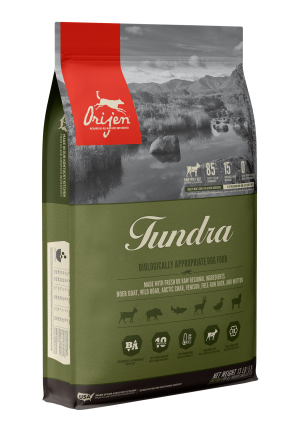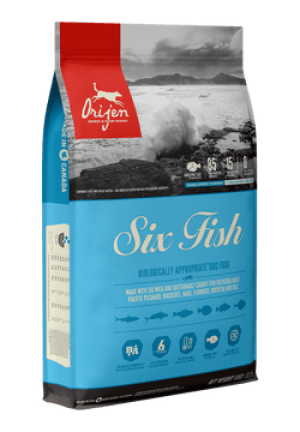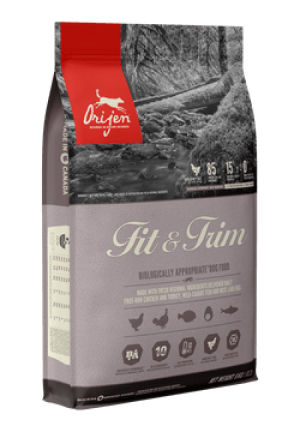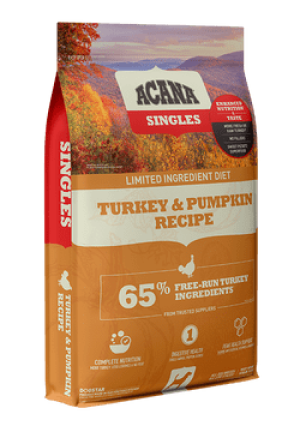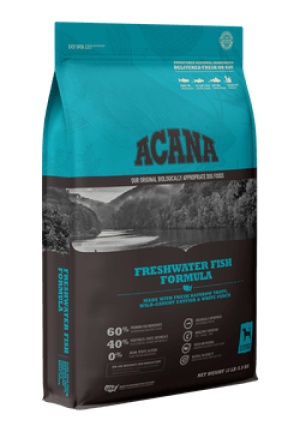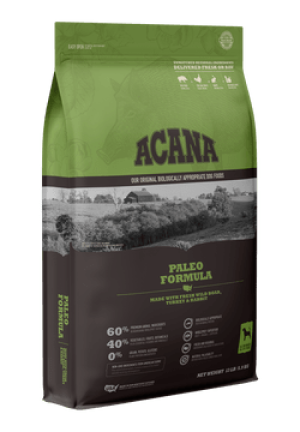Which food is better: Acana or Orijen? I was as confused as you are when I first began researching the two brands. They look nearly identical at first glance, and with an astronomical price tag, I wanted to be sure to choose the right food for my pup. It took a couple of weeks to make sense of branding, ingredients, recalls, scandals, and the fine print. And today, I’m finally ready to share my findings and determine the winner of an epic showdown of Acana versus Orijen dog food.
About Orijen
Orijen is a premium dog food brand by Champion Petfoods that’s been around since 2005. In under two decades, Orijen managed to become one of the most popular food brands, along with its cousin, Acana. Both brands rely on the WholePrey philosophy of pet nutrition that promotes the use of bones, cartilage, and organs along with meat to provide dogs with necessary nutrients in their natural form instead of cramming the ingredient list full of synthetic vitamins and minerals.
But is Orijen better dog food than Acana? It’s certainly similar but still different. For instance, Orijen is a newer brand, and their kibble and wet food variety is limited. It isn’t even divided into lines. When there are barely nine kibble recipes, three canned food options, and a handful of freeze-dried food and treats choices, it’s hard to get lost or confused.
Our Top Orijen Picks
Orijen Tundra
If your pup is a born hunter and spends his days outside instead of warming the couch, this formula will be right up his alley. With 85% animal ingredients, this kibble is chock-full of exciting protein sources, like boar, venison, goat, Arctic char, and more. They boost the overall protein content to 40%, and the freeze-dried liver that coats every bite is a cherry on top. Like most Orijen products, Tundra uses meat, organs, and cartilage to provide healthy vitamins and minerals in their natural form.
Orijen Six Fish
Perfect for picky eaters and pups with poultry sensitivity, this recipe includes 85% animal ingredients that mostly come from the ocean. Expect to see whole hake, flounder, herring, mackerel, sole, and pilchard on the ingredients list and a respectable protein (38%) and fat (18%) content. As with all WholePrey recipes, this kibble includes bone, cartilage, and organs to provide your pooch with balanced and biologically appropriate health supplements instead of synthetic alternatives.
Orijen Fit & Trim
An ideal solution for large breeds and weight management, this formula is super-rich in protein (42%) and light on fat (13%) to promote healthy metabolism and provide enough energy for active canines. The WholePrey ratio includes six core animal ingredients, like free-run chicken and turkey, cage-free eggs, and whole wild flounder, herring, and mackerel. Together, they add up to 85% of the components, and the use of cartilage and organs reduces the need for synthetic supplements.
Orijen Pros
- Up to 85% of ingredients in every dry formula are animal-based, and two-thirds of those are either fresh or raw to preserve maximum nutritional value.
- Detailed ingredient lists specify the content of the core ingredients, so you know exactly what goes into every bite your pup eats.
- The freeze-dried liver coating is Orijen’s ingenious answer to the fussy eater problem. Most canines love the flavor, so you shouldn’t have problems with transitioning to new food.
- Every kibble is available in bags of 12 oz, 4.5, 13, and 25 pounds, so you can give the brand a try and stock up for two or more dogs.
Orijen Cons
- Most Orijen formulas are designed for all life stages and breeds. The company offers only two kibble options for puppies and a single recipe for senior dogs, as well as a sole canned puppy formula.
- All Orijen kibble recipes are grain-free, which might not be suitable for your pooch.
- Orijen canned food is hard to come by online. For now, it’s only available via Pet Supplies Plus.
Read our full Orijen Dog Food Review.
About Acana
Acana was the first brand introduced by Champion Petfoods back in 1985. Since its first days, the company has been committed to providing pets with nutritious, balanced food reminiscent of their ancestors’ diet in the wild. To achieve this goal, Acana relies on locally grown high-quality protein sources, ranging from chicken and turkey to venison, lamb, and pork.
For a long time, Acana focused on producing kibble. The company came up with a limited-ingredient lineup Singles and Wholesome Grains line of dry food that includes grains, while the rest are grain-free. The brand carries a small variety of wet dog food, freeze-dried treats, and biscuits.
Our Top Acana Picks
Acana Turkey & Pumpkin Recipe
Created for canines with food sensitivities, this recipe relies on a single source of animal protein - turkey. However, instead of only using meat, Acana includes bones, cartilage, and organs into the WholePrey recipe that provides nutrition and supplements in their natural form. High in protein (31%) and fat (17%), the limited ingredient kibble works well for all breeds and ages, though you’ll need to adjust portion size if your pooch starts gaining weight.
Acana Freshwater Fish Formula
This fish-rich recipe relies on rainbow trout and catfish to provide your pooch with balanced nutrition, starting with 29% protein and 17% fat. Whole fish, used with bones, cartilage, and organs, helps lower the need for synthetic additives and promotes healthy skin and shiny coat in canines. While this freshwater formula is popular among pets with poultry allergies, Acana is also known for Wild Atlantic and Pacifica recipes. I would be hard-pressed to find the winner in a competition of Acana Pacifica vs Orijen 6 Fish. So it’s a pity Pacifica is not available in the US.
Acana Paleo Formula
A grain-free formula is perfect for dogs who turn their noses up on chicken kibble. Wild boar and turkey are the core sources of protein (29%). Combined with other animal ingredients, they make up for 60% of the components, while the rest comprise fresh veggies, fruit, herbs, and legumes (but not peas). To entice the pups used to artificial flavor enhancers, Acana uses freeze-dried pork liver to coat every bite, making this kibble irresistible for most fussy eaters.
Acana Pros
- An impressive selection of dry and freeze-dried dog food, including grain-free and grain-inclusive recipes, as well as limited ingredient formulas with a single animal protein source.
- Animal ingredients make up for at least 50% of every kibble recipe. Besides the chicken, turkey, and beef, Acana formulas use fish, pork, lamb, bison, venison, boar, goat, and other protein sources.
- All formulas are free of artificial colors, flavors, and preservatives. Acana kibble and wet food do not include soy, corn, or tapioca.
- Four bag sizes available. You can start with a 12-ounce pouch for taste-testing before you graduate to 4.5, 13, or 25-pound bags.
Acana Cons
- Unclear ingredient sources. While Champion Petfoods is very transparent about the core ingredients, like meat, poultry, fish, and vegetables, the sources of supplements remain unclear.
- Few breed and life-stage-specific formulas. I wish there were more specialized recipes for small and large breeds, puppies, and senior canines, as one-size-fits-all solutions are not suitable for every dog.
- Canned dog food is unavailable at most online retailers. Like Orijen, Acana is new to wet food manufacturing, and the stock is low or non-existent across most popular online stores.
Read our full Acana Dog Food Review.
Types of Dog Food from Acana and Orijen
The Acana brand is 20 years older than Orijen, so there’s no competition when it comes to kibble, treats, and wet food variety. If you’re looking for a single-protein source or grain-inclusive dog food, Acana is also your best bet, as all Orijen recipes are 100% grain-free.
The Orijen vs Acana dog food battle is at a tie in the breed and life-stage-specific variety. As Champion Petfoods manufactures both brands, there aren’t many options tailored to the needs of puppies, senior dogs, small or large breeds. While this eliminates the need for transitioning from puppy to adult food, it may also cause troubles with kibble size. The universal bites may be too large for teacup Poodles and too small for Great Danes.
|
Dog food type |
Acana |
Orijen |
|
Dry food |
36 |
9 |
|
Freeze-dried food |
4 |
3 |
|
Canned food |
6 |
3 |
|
Dog treats |
9 |
7 |
|
Puppy formulas |
21 |
10 |
|
Adult dog formulas |
22 |
11 |
|
Senior dog formulas |
22 |
11 |
Nutritional Value Comparison
It’s challenging to pitch Acana versus Orijen because both brands are dedicated to providing nutrient-packed kibble and wet food for dogs. On average, Orijen products have more protein, fat, and fiber, resulting in a higher caloric value, but Acana isn’t far behind. Considering the high nutritional value, you should be careful with portion sizes, especially during the transition period. Too much of a good thing may lead to unwelcome weight gain.
|
Nutrient content |
Acana |
Orijen |
||
|
Wet food |
Dry food |
Wet food |
Dry food |
|
|
Crude protein |
8% to 9.5% |
27% to 35% |
11% |
38% to 42% |
|
Crude fat |
3% to 6% |
17% to 19% |
4% to 6.5% |
13% to 20% |
|
Crude fiber |
1% to 2% |
5% to 6% |
1.5% |
4% to 8% |
Ingredients Comparison
Free-run chicken and turkey, cage-free eggs, wild boar, freshwater and ocean fish - these make up the majority of the ingredients lists for Orijen and Acana. Vegetables, fruit, legumes, and herbs complete the recipes. The difference lies in ratios. Whereas Orijen uses up to 85% animal ingredients in every formula, for Acana, the number varies between 50% and 75%. This translates into higher protein and fat content, as we’ve already established.
Seeing bone meal, cartilage, or organs on the ingredient lists of both brands may be alarming, but it’s a unique feature of all Champion Petfoods products. The company’s nutritionists believe in feeding dogs the same things their wild ancestors would have eaten thousands of years ago. And that includes a variety of protein sources, and WholePrey ingredients, like whole fish, liver, or tripe. Orijen takes this approach a step further and guarantees ten different protein sources in every kibble recipe.
Whichever side you choose in a showdown of Orijen vs Acana, you should know that they probably source ingredients from the same suppliers. After all, most ingredients are similar and are likely locally sourced, except for a few fish and meat varieties imported from Scandinavia or New Zealand. Still, neither of the companies denies the use of Chinese ingredients (particularly health supplements). That does NOT mean Champion Petfoods uses supplements from China, but having a clear answer would be nice.
Price Comparison
Both are premium dog food brands, with prices well over $50 for a 25-pound bag of kibble. In fact, you’ll have to pay $100+ for the most expensive Orijen formulas and over $3 per can of wet food. Orijen, compared to Acana, is more expensive at first glance. But if you look past the price per pound at the price per calorie, you’ll notice the difference is almost negligible. That’s because Orijen kibble is more calorie-dense, so you’ll need to use smaller portions. In the end, a costlier bag of Orijen will likely last you longer than the same bag of Acana. And both will outlast any of the cheaper brands that rely on fillers instead of real meat.
|
Price |
Acana |
Orijen |
||
|
Wet food |
Dry food |
Wet food |
Dry food |
|
|
Per pound/can |
$3.18 - $3.68 |
$2.7 - $3.12 |
$3.68 - $4.18 |
$3.63 - $5.2 |
|
Per calorie |
$0.008 - $0.009 |
$0.0018- $0.002 |
$0.008 - $0.012 |
$0.002 - $0.003 |
Product Safety and Recall History
Acana does not have a single recall on its record since the brand’s inception in 1985.
Orijen cat food was once recalled in Australia in 2008. However, the company launched an in-depth investigation into the health issues and proved that Australian mandatory irradiation treatment was responsible for feline troubles. In fact, Orijen’s research convinced the Australian government to pass new laws concerning the treatment of pet food that includes fresh or raw ingredients and stop further kibble irradiation.
Finally, in 2018, pet owners filed a class-action lawsuit against Champion Petfoods. Though not an issue of Acana vs Orijen, the suit alleged the company falsified the claims about pet food quality. Plaintiffs were unhappy with the heavy metal content within kibble produced using whole fish. However, as the company showed the heavy metal content negligible and safe for cats and dogs, the lawsuit was dismissed in 2019.
Acana vs Orijen Dog Food: Which Should You Choose?
Is Acana or Orijen better? It’s like choosing between two Oscar nominees. Both are great, and it’s up to you to decide which is right for you pooch. Luckily, both brands came up with small (12 oz) packages, so you can let your pup taste-test different formulas without breaking the bank.
If your pup is struggling with food allergies or grain sensitivity, Orijen is a better choice, as all their formulas are grain-free. It will also suit energetic dogs who spend most of their time playing or working.
Acana offers a wider variety of recipes, including limited ingredient formulas, that are better suited for dogs who have trouble digesting poultry or other types of protein. You should also choose Acana if your vet recommends a grain-inclusive diet.
Related articles
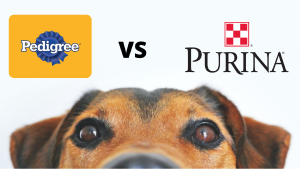
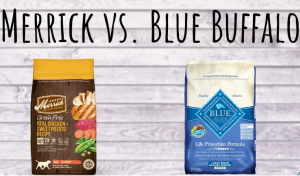
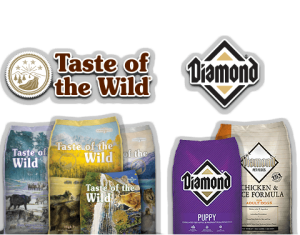
What else do you want to learn?









